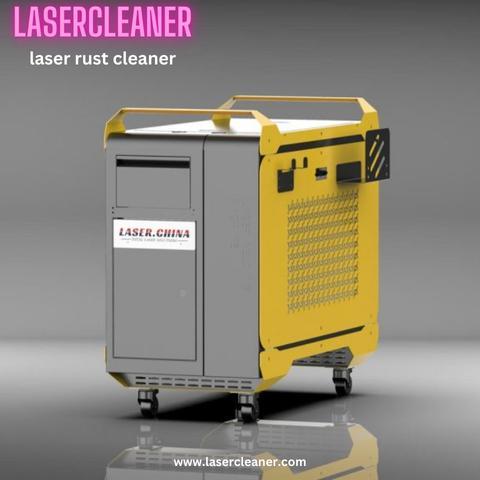Rust is the bane of many industries, causing structural damage, aesthetic deterioration, and decreased performance. Traditional rust removal methods often involve abrasive techniques that can be time-consuming, labor-intensive, and environmentally damaging. However, there's a cutting-edge solution on the horizon: rust cleaning lasers. Let's delve into the advantages of rust cleaning lasers and how they're transforming surface restoration across industries.
Introduction: Unveiling the Innovation
Rust cleaning lasers represent a revolutionary approach to surface restoration, offering a precise, efficient, and eco-friendly solution to the age-old problem of rust. By harnessing the power of laser technology, these advanced tools provide a non-contact method for removing rust and other surface contaminants without causing damage to the underlying material. From industrial machinery to historical artifacts, rust cleaning lasers offer a versatile solution for restoring surfaces to their former glory.
Understanding Rust Cleaning Lasers: How Do They Work?
Rust cleaning lasers utilize high-intensity laser beams to vaporize rust and other surface contaminants. Unlike traditional methods such as sandblasting or chemical treatments, laser cleaning does not involve physical contact or the use of harsh chemicals, making it a safer and more environmentally friendly option. The laser energy is absorbed by the rust layer, causing it to vaporize and detach from the surface, leaving behind a clean, rust-free substrate. This non-abrasive process preserves the integrity of the material and reduces the risk of damage to delicate surfaces.
Advantages of Rust Cleaning Lasers: Why Choose Laser Technology?
-
Precision: Rust cleaning lasers offer unparalleled precision, allowing operators to target specific areas without affecting surrounding surfaces. This precision ensures thorough rust removal while minimizing the risk of damage to the underlying material.
-
Efficiency: Laser cleaning is a fast and efficient process, capable of removing rust and other contaminants quickly and effectively. This efficiency translates to increased productivity and reduced downtime for maintenance and restoration projects.
-
Versatility: Rust cleaning lasers are suitable for a wide range of applications, from industrial equipment and infrastructure to historical artifacts and artworks. Their non-contact nature makes them ideal for delicate surfaces and complex geometries.
-
Environmental Friendliness: Unlike traditional rust removal methods, laser cleaning does not produce hazardous waste or emissions. It eliminates the need for harsh chemicals or abrasive materials, making it a cleaner and more sustainable option for surface restoration.
Applications of Rust Cleaning Lasers: Where Can They Be Used?
Rust cleaning lasers find application in various industries and settings:
- Manufacturing: Cleaning rust from metal components, machinery, and equipment to maintain optimal performance and prolong service life.
- Automotive: Restoring vintage cars and removing rust from automotive parts to enhance appearance and value.
- Aerospace: Removing corrosion from aircraft components and structures to ensure safety and reliability.
- Cultural Heritage: Preserving historical artifacts, sculptures, and monuments by gently removing surface contaminants without causing damage.
Conclusion: Transforming Surface Restoration
In conclusion, rust cleaning lasers represent a significant advancement in surface restoration technology, offering a precise, efficient, and environmentally friendly solution to the challenges of rust removal. Whether it's revitalizing industrial machinery, preserving cultural heritage, or restoring automotive classics, rust cleaning lasers provide a versatile and effective tool for maintaining and enhancing the integrity of surfaces. With their ability to remove rust without damaging the underlying material, rust cleaning lasers are revolutionizing surface restoration across industries, paving the way for a cleaner, safer, and more sustainable future.

